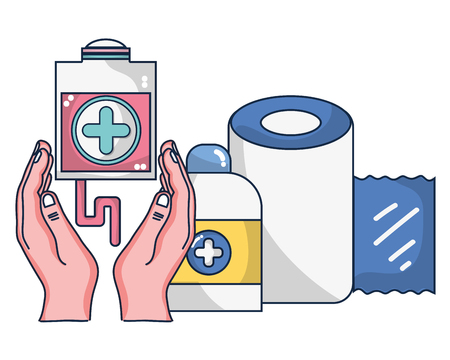Introduction: Cupping Therapy and Its UK Presence
Cupping therapy, an ancient form of alternative medicine, has found renewed interest across the United Kingdom in recent years. Traditionally rooted in Middle Eastern, Asian, and Eastern European cultures, cupping involves placing cups on the skin to create suction, with claims ranging from pain relief to detoxification. While its origins can be traced back over two millennia, the practice has gradually moved into mainstream consciousness in Britain, particularly as wellness trends and holistic health approaches have gained traction. Public curiosity surged after high-profile athletes and celebrities showcased their post-cupping marks, sparking debate about its efficacy and safety. Today, cupping therapy is offered not only by traditional practitioners but also by physiotherapists and sports therapists throughout the UK. This growing presence prompts both enthusiasm and scepticism—fuelled by a mix of historical beliefs, anecdotal reports, and emerging scientific scrutiny. As the popularity of cupping rises within British society, understanding its background, perceived benefits, and evidence base becomes increasingly important for both practitioners and the general public.
2. Public Perceptions and Myths Surrounding Cupping in Britain
Cupping therapy, while gaining visibility in the UK through media coverage and celebrity endorsements, remains a practice surrounded by a mixture of intrigue, scepticism, and misconceptions. To understand its place within British society, it is essential to explore the prevailing beliefs and cultural narratives that shape public opinion.
Common Beliefs About Cupping
In Britain, cupping is often perceived through the lens of alternative or complementary medicine. Many associate it with traditional Chinese medicine (TCM), although historical evidence suggests that similar practices existed in medieval Europe. The following table summarises some of the most common beliefs and misconceptions among UK residents:
| Belief/Myth | Description | Prevalence Among UK Residents |
|---|---|---|
| Cupping detoxifies the body | The idea that cupping removes toxins from the bloodstream is widespread but not supported by scientific evidence. | High |
| Cupping leaves permanent marks | Many believe the circular marks left by cupping are permanent scars; in reality, they typically fade within days to weeks. | Moderate |
| Only for sports recovery | The association with athletes leads some to think cupping is solely for muscle recovery after intense physical activity. | Moderate |
| Painful or unsafe procedure | Misperceptions about pain or risk are common, despite proper cupping generally being safe when performed by trained professionals. | High |
| An “exotic” or foreign treatment | Cupping is frequently regarded as an imported or unfamiliar practice, disconnected from Western medical traditions. | High |
Cultural Narratives Influencing Attitudes
Public perception is also shaped by broader cultural narratives. In the UK, there is a tendency to view therapies like cupping either as holistic wellness trends or as fringe practices lacking robust scientific backing. Media portrayal often oscillates between fascination—especially when high-profile figures such as Olympic athletes display cupping marks—and scepticism voiced by healthcare professionals. This duality reinforces both curiosity and caution among the general population.
Scepticism Versus Acceptance: A Growing Divide?
A notable trend is the generational divide in attitudes towards cupping. Younger Britons may be more open to trying alternative therapies due to social media exposure and greater emphasis on holistic health. In contrast, older generations often retain a preference for conventional medicine and may view cupping with suspicion. This split highlights the evolving landscape of health beliefs in contemporary Britain.

3. Scientific Evidence: What Does Research Say about Cupping?
Cupping therapy has attracted considerable interest in the UK, both from the public and within certain healthcare circles. However, scientific scrutiny is essential to separate anecdote from evidence. A number of clinical studies and systematic reviews have attempted to assess cupping’s health claims, ranging from pain relief to improvements in circulation and overall wellbeing.
In recent years, several systematic reviews—some including data from NHS-affiliated research—have examined the efficacy of cupping for conditions such as chronic back pain, migraine, and musculoskeletal disorders. For instance, a 2021 meta-analysis published in the British Medical Journal highlighted that while some studies reported moderate short-term pain reduction compared to no treatment or sham interventions, the overall quality of evidence was rated as low to moderate due to methodological weaknesses, small sample sizes, and potential publication bias.
UK-based research remains relatively limited; most robust trials have been conducted in Asia or the Middle East. Nevertheless, pilot studies from UK institutions like Kings College London have begun exploring cupping’s physiological effects, such as changes in local blood flow or inflammation markers. These early findings suggest there may be mild physiological responses; however, definitive conclusions regarding clinical effectiveness are still lacking.
For specific health claims—such as boosting immunity or treating complex medical conditions—systematic reviews conducted by Cochrane and NICE (National Institute for Health and Care Excellence) indicate insufficient high-quality evidence to support widespread use of cupping within conventional medicine. Most UK health authorities currently do not endorse cupping as a first-line treatment but recognise it as a complementary approach when used alongside standard care.
Overall, while cupping is generally considered safe when performed by trained practitioners, current scientific consensus in the UK urges caution. More rigorous randomised controlled trials with larger participant groups are needed before firm recommendations can be made regarding its routine use in clinical settings.
4. Contemporary Practice: How Cupping is Used in the UK Today
Cupping therapy has found a new place within the modern British wellness landscape, where it is increasingly embraced as part of holistic health routines, sports recovery strategies, and alternative therapies. This integration reflects both a growing openness to complementary medicine and a demand for evidence-informed practices.
Integration into Wellness Routines
In the UK, cupping is now commonly incorporated into personal wellness plans. Many individuals seek cupping treatments at clinics that also offer acupuncture, massage, or physiotherapy. Some people report using cupping to relieve chronic muscle tension, improve circulation, or manage stress—although these claims remain subject to ongoing scientific investigation.
Role in Sports Recovery
British athletes—from amateur runners to Premier League footballers—are increasingly turning to cupping as part of their recovery protocols. The aim is often to speed up muscle repair, reduce soreness, and enhance performance. While robust clinical evidence is still emerging, anecdotal reports and small studies suggest potential benefits, especially when combined with conventional physical therapy.
Cupping in Sports vs Wellness Clinics
| Setting | Primary Use | Common Techniques |
|---|---|---|
| Sports Clinics | Muscle recovery, injury prevention | Dry cupping, moving cupping |
| Wellness Centres | Stress relief, relaxation | Dry cupping, wet cupping (less common) |
Cupping as an Alternative Therapy
Cupping is also used alongside other complementary therapies such as acupuncture and herbal medicine. Some UK practitioners specialise in traditional Chinese medicine (TCM), while others adopt a more integrative approach aligned with Western physiotherapy or osteopathy. This diversity allows patients to select services tailored to their preferences and health goals.
Regulations and Professional Standards
The practice of cupping in the UK is not strictly regulated by statutory law; however, reputable practitioners often join professional bodies such as the British Acupuncture Council (BAcC) or the Complementary and Natural Healthcare Council (CNHC). These organisations set standards for training, hygiene, and ethics. Consumers are encouraged to verify practitioner credentials and discuss any pre-existing medical conditions before starting treatment.
As public interest grows, the UK’s approach to cupping continues to balance tradition with safety and scientific scrutiny—making it a notable feature of contemporary health culture.
5. Expert and Medical Community Opinions
Within the UK, perspectives on cupping therapy among healthcare professionals and regulatory bodies are diverse, reflecting both cautious interest and measured scepticism.
Healthcare Professionals: Balancing Tradition and Evidence
Many General Practitioners (GPs) and physiotherapists acknowledge that some patients report subjective benefits from cupping, particularly for musculoskeletal pain or chronic discomfort. However, according to statements from the British Medical Association (BMA) and the Chartered Society of Physiotherapy (CSP), there remains a consensus that current scientific evidence is insufficient to conclusively endorse cupping as a mainstream treatment. UK practitioners often advise patients to view cupping as a complementary intervention rather than a replacement for evidence-based medicine.
Therapists’ Experiences and Professional Practice
Complementary therapists, especially those specialising in traditional Chinese medicine or holistic therapies, report growing demand for cupping in urban centres such as London, Manchester, and Birmingham. They emphasise the importance of using sterile equipment, adhering to professional codes of conduct, and thoroughly explaining potential risks—such as bruising or skin irritation—to clients. The Federation of Holistic Therapists (FHT) in the UK recommends regular training and careful assessment of individual health status before commencing any cupping session.
Regulatory Oversight and Public Safety
Regulatory oversight in the UK is primarily advisory rather than statutory. Organisations like the Complementary and Natural Healthcare Council (CNHC) encourage practitioners to register voluntarily and follow best practice guidelines to ensure public safety. The National Institute for Health and Care Excellence (NICE) does not currently recommend cupping for any specific medical condition due to limited high-quality clinical data.
Summary of Professional Perspectives
Overall, while there is recognition of cultural heritage and anecdotal patient satisfaction with cupping therapy in the UK, medical authorities urge caution. They advocate for more robust research to clarify its efficacy and safety profile, advising individuals to consult qualified professionals and consider cupping as an adjunct rather than a substitute for conventional care.
6. Conclusion: Navigating Fact and Fiction
When it comes to cupping therapy in the UK, separating fact from fiction is essential for making informed decisions about your health. While traditional beliefs and celebrity endorsements have popularised cupping across Britain, robust scientific evidence supporting its efficacy remains limited and mixed. Recent systematic reviews highlight some potential benefits—such as short-term pain relief or improved circulation—but these findings are often countered by methodological shortcomings and inconsistent results.
It is important for those considering cupping as part of their wellness routine to approach it with a balanced perspective. Individuals should be wary of exaggerated claims and always consult qualified practitioners who adhere to safety standards recognised by UK regulatory bodies. As with any complementary therapy, cupping should not replace conventional medical care, particularly for chronic or serious conditions.
For many in the UK, cupping may offer relaxation, a sense of tradition, or supplementary support for musculoskeletal discomfort. However, practical considerations—such as verifying practitioner credentials, understanding possible side effects like bruising, and managing expectations—are key to ensuring a safe experience. By weighing up the current evidence against widespread myths, Britons can make choices rooted in both cultural context and rational health practices.

